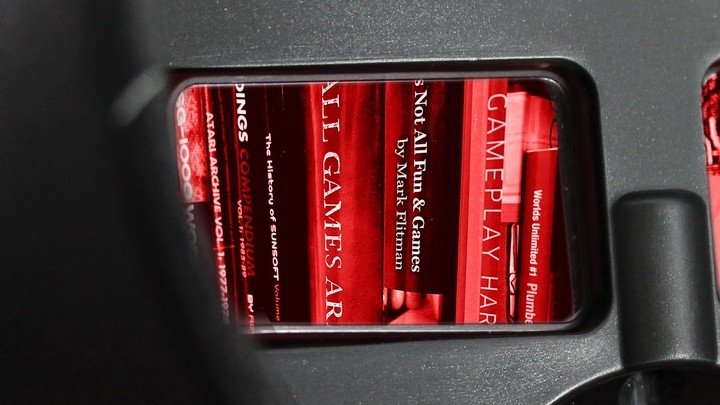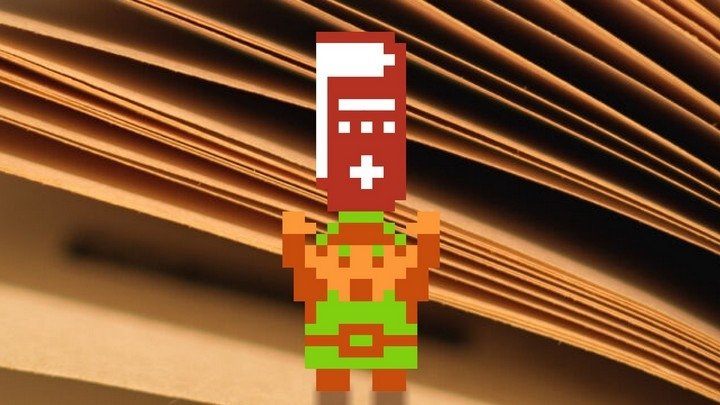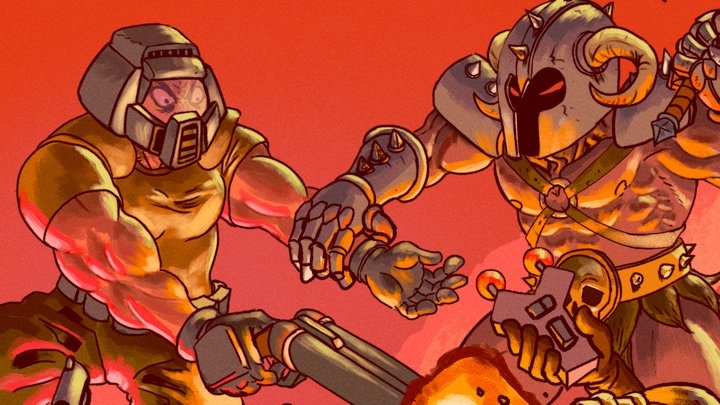How Diablo 2's fast pace and character customization revolutionized action games
Author David L. Craddock outlines a central point in his upcoming book on the action RPG's history.
David L. Craddock is the author of Stay Awhile and Listen: Book II – Heaven, Hell, and Secret Cow Levels, now funding on Kickstarter in paperback and Kindle formats.Stay Awhile and Listen: Book IIchronicles the making of StarCraft and Diablo 2, and explores the culture of Blizzard Entertainment and Blizzard North from 1997 through 2003. The first book was published in 2013 and is available in paperback and on Kindle.
In August 2000, Harry Potter was the hottest thing going. One month earlier, the fourth volume in the series, Harry Potter and the Goblet of Fire, had disapparated onto the scene. Bookworms queued up at bookstores in lines that stretched around city blocks to find out what perils and magical curriculum awaited The Boy Who Lived in his fourth year at Hogwarts. Newscasters proclaimed Harry Potter-mania the biggest sensation in all of entertainment.
Almost.
"Diablo 2 outsold Harry Potter," said Chris Root, an artist at Blizzard North. "There was an article about how when the book first went on sale, we outsold it by huge quantities."
The article in question ran in the New York Times on August 3, and extolled the high sales of Diablo 2's collector's and regular edition: nearly 200,000 copies before the game's official street date of June 29, Blizzard North co-founder Erich Schaefer's birthday. "I was in Paris on my honeymoon," Erich said. "I remember being in Paris at the Virgin Megastore and seeing big banners for Diablo 2. People were lining up. That was really cool. I basked in it."
Diablo 2's sales quickly ballooned to over a million, the Times author continued, before breaking down the differences between Blizzard North's opus and Harry Potter. The latter was a book, you understand, while the former was a "Dungeons and Dragons-like" PC game where players fought against the hordes of hell.
That's one similarity between Diablo 2 and Harry Potter 4: Religious types loved to rag on them without bothering to grasp the nuances of their stories or what made them popular. Harry's not a devil worshipper. He uses his wizarding powers for good. Likewise, Diablo 2 thrusts players into battle against the game's namesake, the demon Diablo, Spanish for "devil." Diablo's the villain. Players are heroes. (As a point in Diablo's favor, I've never heard about any zealots gathering to burn discs.)
Another parallel: Harry Potter made reading cool again, setting the path for young adult literature for the next decade and turning on countless millions of consumers to the magic of reading. Diablo 2 was as influential in its space, the action-RPG sub-genre of roleplaying games.
"I think Diablo 2 endures in part because an insane amount of work was put into it, and we made a lot of correct decisions and approached it from a consistent sensibility that the so-called Diablo killers—which to some extent are trying to be Diablo, yet something different—tried to replicate," added Max Schaefer, Blizzard North's co-founder along with his brother Erich and their friend David Brevik.
Not unlike the titular demon's creeping influence over his host, Diablo 2's impact on entertainment extends far beyond the likes of Titan Quest, Path of Exile, and Torchlight. The game's features and systems impacted action games as a whole, from its speed to its easy-to-pick-up skill system that let players define avatars on the fly.
Somewhat paradoxically, Diablo 2, like all Blizzard games, innovated by taking a known formula and smoothing down its rough edges. "I've always said the success of all of Blizzard's games was mainly about execution," said Stieg Hedlund, designer on the game. "Like all the -Crafts, the Diablo series has definite forebears—though, I would argue, does more to construe them is a new way than do those other franchises—but executes to a very high level on every front."
History bears this out. Warcraft was inspired by Westwood Studios' Dune II. World of Warcraft was EverQuest, only much more user-friendly and colorful. Hearthstone's roots trace back to Magic: The Gathering, and Overwatch takes several pages from Team Fortress's playbook. More than 20 years ago, the first Diablo was born from roguelike RPGs. Blizzard North's breakout hit started as a single-player, turn-based game set in procedurally generated levels before they partnered with Blizzard Entertainment, whose president and lead designer, Allen Adham, convinced Dave Brevik to give real-time combat a try. The result was a fast-paced game designed to be played with one hand. Players clicked to move, to fight, to cast spells, and to pick up the truckloads of loot that spilled from monster corpses like candy from a piñata.
The combination of instantaneous feedback, simple controls, and the inclusion of Blizzard's free Battle.net multiplayer service—the first game to feature the now-ubiquitous online matchmaking system—propelled Diablo to critical and commercial success. Still, there was room for improvement. It was a vertical game, set in a stack of claustrophobic dungeons through which players and monsters alike moved at a brisk walk.
Diablo 2 broke down walls and took place across vast pastures, deserts, rainforests, and plateaus of hell. Walking was still an option, but thanks to a generous stamina bar that increased every time players leveled up, very few players strolled along battlefields. They charged headlong at a sprint. So did monsters, upping the speed of combat and exploration. Fights no longer took place in murky cells cordoned off by doorways through which players could filter demons one at a time. Monsters rushed in from every side, slashing and casting and stabbing. Players could stand and fight, or run circles around them, literally dropping fire in their path as the Sorceress or peppering foes with projectiles as a bow-wielding Amazon or axe-throwing Barbarian.
"I think the pacing was just perfect," said Marc Tattersall, an artist on the game. "It veered away from the 'I'm in a battle with this one guy' and broke it down to being a frantic onslaught. I've broken mice playing that game."
Diablo 2 was as simple as its predecessor. It was also more limiting in a way that worked to its benefit. The game's five heroes—Barbarian, Amazon, Necromancer, Paladin, and Sorceress—each had 30 skills exclusive to them. That differed from the first game, where players could start as any of the three archetypical Warrior, Rogue, and Sorcerer classes and then learn to use any weapon or spell by spending experiences points on the appropriate stats.
The downside to Diablo's overlapping classes was that players could get confused and frustrated. They'd start as a Warrior, but end up spending too many experience points on spells and fall behind in their proficiency swinging swords and wearing heavy armor. Diablo 2's classes and their unique skills played to the franchise's accessibility: Players understood the archetype of a Barbarian, and thanks to its predefined skills, wouldn't go trying to throw fireballs with him.
Diablo 2's skill trees had a huge effect on action games going forward. While earlier titles such as Sid Meier's Civilization and Master of Orion had featured research trees in the same spirit as Diablo 2's branching skill system, those were strategy games, slow and complex, accessible only to players willing to invest dozens of hours to learn their ins and outs. Diablo 2's linear skill progression could be grasped in minutes, if not seconds.
"I'm really proud to have been part of that because I think there's one thing that really differentiates that game: it's infinitely replayable. People still play that game. It's crazy," said Peter Kemmer, a programmer at Blizzard North.
Numerous other components boosted Diablo 2 to success as arguably the greatest action-RPG of all time. Although players had to load between the game's four chapters, those chapters were comprised of sprawling areas that loaded seamlessly as players moved from area to area. Up to eight players could join a session on Battle.net, party up to share gold and experience, and thanks to the wide array of skills available, even two players controlling the same hero were almost guaranteed to wind up playing very different characters.
All that, in a 2D game engine that thrived during an era when every other developer seemed all too eager to abandon pixels for polygons. That—and the old standby of mouse-driven play—was the special spice in every Blizzard recipe: Aim for low-end hardware to attract the largest audience possible, but make the game easy to learn and nearly impossible to put down.
"You can delete it off your computer, and then a year later you're going through your old jewel cases, and there it is," said Peter Brevik, one of Diablo 2's programmers. "You reinstall it, you start playing again, and all the sudden you look at the clock and it's one o'clock in the morning, and that old feeling just comes back."
The sweeping changes to Diablo 2's formula made it the first action-RPG for millions of players, an audience even larger than that of the first game. That style of evolution, dropping slow and stodgy mechanics for adrenaline-fueled systems, has breathed new life into numerous other series, such as the jump from Resident Evil's tank controls and static cameras to Resident Evil 4's over-the-shoulder camera and action-heavy set pieces.
That's not to say that Diablo 2 was responsible for Resident Evil's success. Rather, that Diablo 2, like id Software's Doom and Nintendo's Super Mario Bros., evinced a lesson embraced by action-game designers the world over: The cleaner a game's interface, the simpler its controls, the more inviting (and even limited) its systems, the more gripping its core gameplay loop, the more likely players are to flock to it, and stick with it for years to come.
"It was just a magic formula. I think we tapped into some real primal gamer pleasure switch," agreed audio designer Scott Petersen. "It came from some really talented individuals and creative people that wanted to make a game that they wanted to play, and it turned out that millions of other people wanted to play that same game."
"Now, today, you can still walk into any store, and there it is, right on the shelf. It's crazy. It's a little embarrassing, almost," said David Brevik.
David L. Craddock is the author of Stay Awhile and Listen: Book II – Heaven, Hell, and Secret Cow Levels, now funding on Kickstarter in paperback and Kindle formats.Stay Awhile and Listen: Book IIchronicles the making of StarCraft and Diablo 2, and explores the culture of Blizzard Entertainment and Blizzard North from 1997 through 2003. The first book was published in 2013 and is available in paperback and on Kindle.




